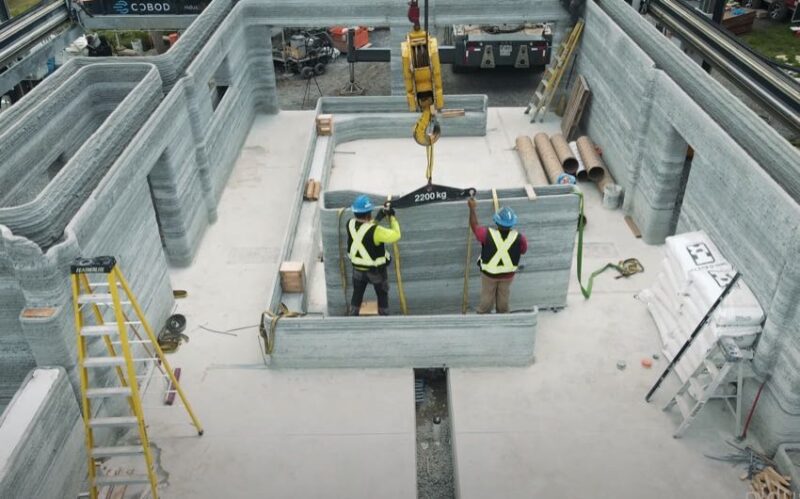3D printing has become more and more commonplace in the past few years. It gives you the ability to materialize pretty much anything you can think of, granted you have the right equipment. Who says the same concept can’t be used to create entire buildings?
3D printing in construction isn’t a brand-new idea, but it’s certainly not mainstream— well, not yet. You may be thinking, “The future is now,” but we’ve actually seen this type of technology since the mid-20th century. In the 1950s and ’60s, the introduction of robotic bricklaying machines constituted an early version of the automated-building idea. Concepts like this lead to the modern practice of using concrete to make 3D-printed buildings, which has taken quite a hold on the construction industry in recent years.
Nidus3D: Pioneers In Structural 3D Printing
One company in particular recently completed a project dubbed North America’s first 3D-printed two-story building. Nidus3D, based out of Ontario, Canada, wants to prove that the industry has the ability to grow and adapt to this newly-embraced form of technology. As Nidus3D’s second completed structure, this two-story, 2,300-square foot space aims to set a precedent for future 3D-printed buildings.

Nidus3D used the BOD2 printer from the 3D construction company COBOD to erect this building. It previously built the first two- and three-story 3D-printed structures across the pond in Europe. This machine prints with real concrete with a particle size of up to 10mm.
One of the advantages of using this technology over traditional construction efforts is that teams can build structures at a much quicker rate. This Canadian two-story building took around 80 hours to complete, compared to the sometimes months-long process it can take using traditional construction methods. The company says that there is a good likelihood that future buildings will be made even faster. When you think about it, even ten 8-hour days to build an entire house is a pretty sweet timeline.
Final Thoughts
Nidus3D hopes the swift building speed will help solve the current housing gap in Canada, a problem that is sadly echoed around the world. Surely, we will have to wait to see what the future holds for the construction industry with the continuation of this technology. Our guess is that you will be hearing a lot more about 3D-printed buildings in the coming years.



